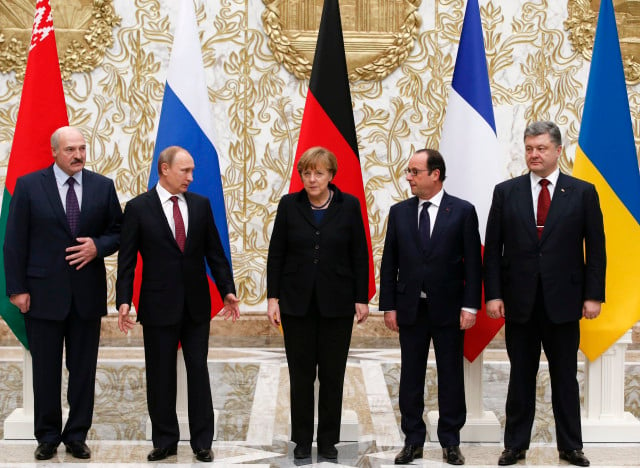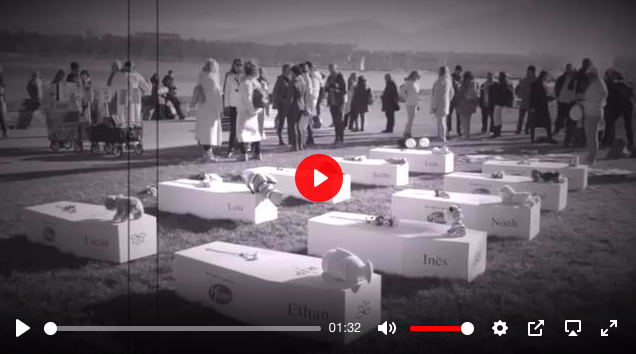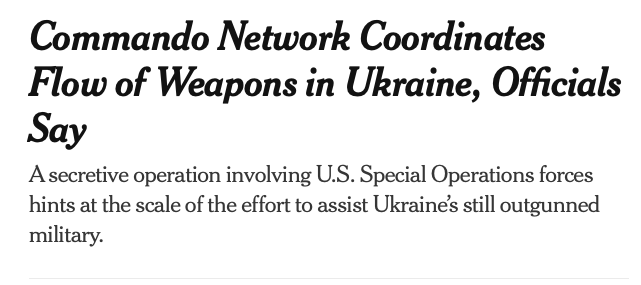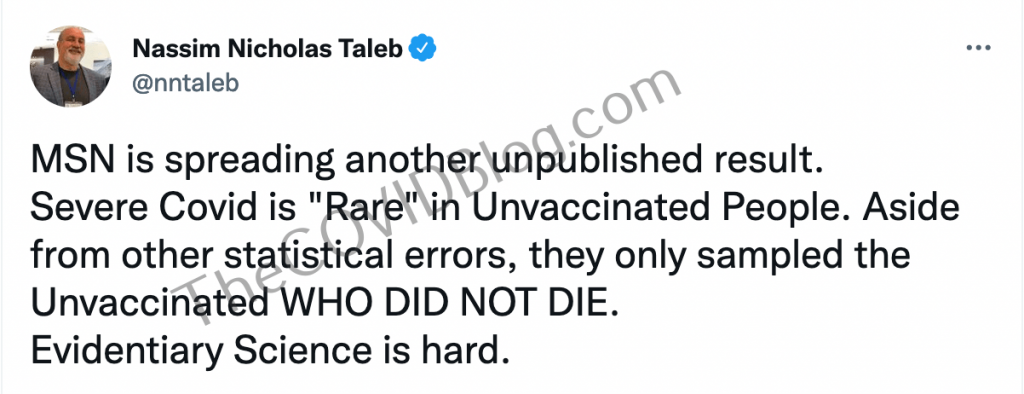All Global Research articles can be read in 51 languages by activating the “Translate Website” drop down menu on the top banner of our home page (Desktop version).
To receive Global Research’s Daily Newsletter (selected articles), click here.
Visit and follow us on Instagram, Twitter and Facebook. Feel free to repost and share widely Global Research articles.
***
Exactly 80 years ago in the high summer of 1942, Nazi Germany still seemed to be in a dominant position in the Second World War. The Wehrmacht’s divisions controlled most of continental Europe and European Russia, while the Axis’ fortunes in North Africa looked to be improving.
On 21 June 1942, German and Italian troops completed a crushing victory against British and American-led divisions in north-eastern Libya, during what is called the Battle of Gazala. Supported by Italian units, Field Marshal Erwin Rommel’s Afrika Korps inflicted 50,000 casualties on the enemy (1). German casualties came to a mere 3,360, despite the fact in the Battle of Gazala the Western Allies possessed slightly greater numbers of men, tanks and aircraft than the Axis forces.
The question is seldom asked: how was it possible in two world wars for a medium-sized nation like Germany, lacking in natural resources and flanked on either side by potential enemies, to fight prolonged, large-scale and often successful battles against the world’s strongest countries (America, Russia, Britain and France)?
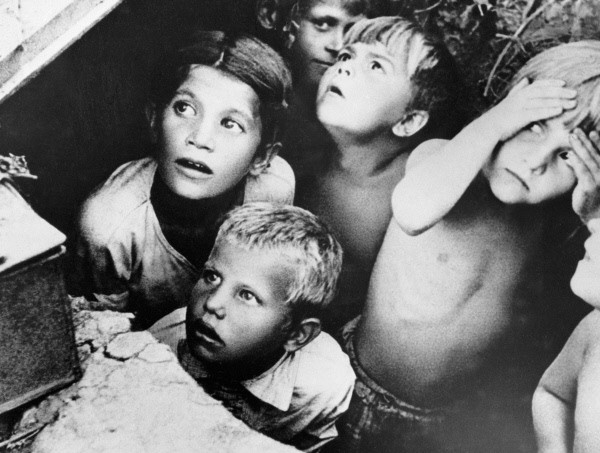
Soviet children during a German air raid in the first days of the war, June 1941, by RIA Novosti archive (Licensed under CC BY-SA 3.0)
First of all Germany possessed a brilliant railway system, with 4 large rail lines running from east to west across the country, each of which was capable of taking 2 army corps from East Prussia to the Rhine, in western Germany, in 18 hours. It meant that the Germans could mobilise and transfer their forces much more quickly than other European states.
Moreover, the military historian Donald J. Goodspeed wrote,
“Germany and Austria possessed the two large armament firms of Krupp and Skoda, which were technically in advance of armament firms in other countries. More important than any of this was the excellence of the German Army, which was a very serious and professional organization. It was not by any means the largest army on the continent, but it was by all odds the best. Since 1864, the Prussian General Staff had been recruited on the basis of ability; it was highly trained and dedicated, but was open to the influence of new military ideas. German regimental training and discipline were also superior to those of other continental armies”. (2)
After 4 years of grinding war (1914-18), having finally been thrown back by the greater firepower of the Franco-American-British forces, within the German Army the above virtues remained embedded in its military core through the 1920s; and into the Nazi period from 1933, including after when Adolf Hitler’s influence became absolute.
By the second half of June 1942, much of North Africa was in German and Italian hands. The previous month, in eastern Europe, the Red Army had suffered another serious defeat in late May 1942. This occurred in the Kharkov region (oblast) and is known as the Second Battle of Kharkov.
Located in eastern Ukraine, Kharkov was the USSR’s 4th largest city, a noted industrial centre, and it sits less than 25 miles from the Russian border. Kharkov had been captured by the German 6th Army on 24 October 1941. Six and a half months later on 12 May 1942, three Soviet infantry armies advanced on Kharkov from the east 25 miles away, in the hope of liberating the city from Nazi rule and turning the tide of war in Russia’s favour. (3)
Simultaneously, the Soviet 6th Army, with a concentration of tanks, approached Kharkov from the south 35 miles away. Their prospects looked promising. The Russians outnumbered the German-Axis forces by more than 2 to 1, but progress was slower than Joseph Stalin and his entourage hoped for.
More seriously, the Germans had been expecting a Soviet offensive near Kharkov, and they laid a trap for the communist divisions. From 17 May 1942, the Wehrmacht implemented an encircling movement from the north and south in the Kharkov region, which closed like a ring around the Russian troops. They tried at first to meet the surprise German threat head on and, when this failed, the Soviets attempted to extricate themselves from the encirclement by moving in an eastwardly direction (4). It was too late – on 23 May the German pincers had snapped shut.
British historian Evan Mawdsley wrote,
“By 29 May, two and a half weeks after it began, the Battle of Kharkov had ended in overwhelming Russian defeat. It was a catastrophe on the same scale as 1941. Some 18 to 20 Russian divisions were destroyed. The recorded Russian losses were 171,000 personnel, but the Germans claimed to have captured 214,000 prisoners, 1,200 armoured vehicles, and 2,600 guns”. (5)
The large number of Soviet troops, who had surrendered to the Germans here, indicates that morale and discipline problems remained within the Red Army. This was not helped by the fact that the Luftwaffe continued to enjoy aerial superiority, and German bombing raids around Kharkov were a central factor in allowing the Wehrmacht to outmanoeuvre the Soviet forces.
Furthermore, Mawdsley highlighted that Hitler’s influence over the success at Kharkov was crucial; because the Nazi leader had “fully supported” the setting of a trap against the advancing Soviet armies, which Mawdsley wrote was “an act of daring” that Hitler sanctioned (6). Credit should be given where it is due. Hitler has justifiably received widespread criticism for the later defeat at Stalingrad, but his decisive role in victories such as at Kharkov usually receives no mention and is little known.

German infantry and a supporting StuG III assault gun during the advance towards Stalingrad, September 1942 (Licensed under CC BY-SA 3.0 de)
Mawdsley discerned “at Kharkov the Wehrmacht again demonstrated the operational and tactical skills that had led to the victories of the summer and autumn of 1941” (7). The Soviet defeat at Kharkov saw a huge hole punctured in their defences. It was now possible for the German 6th Army to pour through this gap, allowing it a few weeks later to approach Stalingrad, located 385 miles further east of Kharkov as the crow flies.
The Second Battle of Kharkov revealed endemic problems in the Red Army’s command structure, and weaknesses at the operational level. These issues, which had hindered the Red Army from the start of the war and contributed significantly to their early losses, were mainly due to the debilitating effects of Stalin’s purges of the military high command from 1937-41; this had resulted in about 22,000 Soviet officers being dismissed from the armed forces, the majority of them killed. (8)
Marshal Kliment Voroshilov, the pre-war commander of the Red Army, bemoaned in early October 1941 how the situation at the front is “awful” and “our organization is weaker than theirs. Our commanding officers are less well trained. The Germans succeed usually because of their better organization and clever tricks”. (9)
At the time of the Winter War with Finland in early 1940 Voroshilov, who had a considerable role in carrying out Stalin’s orders during the Red Army purges, directly accused the Soviet ruler to his face of devastating the military. In a meeting at his country dacha, Stalin started shouting at Voroshilov, blaming him for the sluggish Soviet performance against the Finns. In a surreal scene, Voroshilov roared back at Stalin, “You have yourself to blame for all this! You’re the one who annihilated the old guard of the army; you had our best generals killed!” (10)
While Stalin deserves criticism for severely harming the Red Army, and needlessly so, he should be commended for overseeing the Soviet Union’s industrial power. Credit should again be given where it is due, and Stalin’s belief in modernisation and mechanised warfare were important factors in later turning the conflict around, which will be mentioned further on here.
In mid-1942 the Red Army was, in addition, still suffering from the crippling damage it had endured in the opening phase of Hitler’s attack, with Operation Barbarossa having begun on 22 June 1941. Two and a half weeks later, by 9 July 1941 the Wehrmacht had inflicted on the Red Army a total of 589,537 irrecoverable losses. (11)
During the first weeks of Nazi Germany’s invasion, the Soviet Army was losing on average more than 44,000 men per day, unequalled in military history. In Barbarossa’s early stages, the German advance also “averaged 45 km a day”, Irish geographer and climate scientist John Sweeney wrote. (12)
The Germans, 3 weeks into the war, had by 13 July 1941 suffered 92,120 casualties (13). It can be mentioned that casualties do not by any means, in each case, constitute irrecoverable losses. Casualties translates to those killed, taken prisoner, wounded and missing. In the latter two instances, quite a number of soldiers do recover from injuries, and a minority of those missing can find their way back and return to their units.
The German casualty list rose to 213,301 by 31 July 1941, almost 6 weeks into the invasion; however, out of the 213,301 figure, only 25,000 of those were deaths suffered by the Germans at the end of July 1941, with military scholar Chris Bellamy providing the latter statistics (14). By late July the Wehrmacht had also received 47,000 fresh troops, who joined the fighting in the east. (15)
By the middle of August 1941, now 8 weeks into the Nazi-Soviet War, the Wehrmacht had captured around 1.5 million Soviet troops (16). By 30 September 1941, after just over 3 months of fighting, the Red Army according to Mawdsley had suffered irrecoverable losses of “at least 2,050,000”. (17)
Bellamy estimates that, at the end of September 1941, the Red Army had suffered irretrievable losses of 2,129,677 (18). In comparison, by 30 September 1941 the Wehrmacht had 185,000 irrecoverable losses (19). This equates to less than 10% of Soviet losses. Unfortunately the figures do not make pleasant reading, but it is a testimony to the resilience of the Soviet state, and specifically the Russians, that they were able to absorb these blows and avoid ultimate defeat in the war.
From October to December 1941, the Red Army suffered irrecoverable losses of 950,000, compared to permanent German losses of 117,000 during the same 3 month period (20). Bellamy wrote that, from Barbarossa’s first weeks, in favour of the Germans a “one-to-ten balance” was “emerging between the respective ground forces”. (21)
In 1941, something close to 80% of Soviet irrecoverable losses were those who surrendered, once more indicating worrying morale issues in the military. At the end of 1941 the Germans had captured 3.8 million Soviet troops (22), and virtually wiped out the Red Army’s original 5.3 million strong military force of June 1941. The Russians were able to replenish their losses somewhat during 1941, by dispatching fresh reserves to the front from further east.
By 31 January 1942, the Wehrmacht had suffered a total of 918,000 casualties (23). Three weeks later, on 20 February 1942 the figure had risen to 1,064,768 casualties, obviously quite a high number. Yet this does not mean, after 8 months of fighting, that the Wehrmacht had permanently lost nearly a third of its original attacking force, of 3.1 million men. Again regarding the invaders these are not all irrecoverable losses.
Out of the 1,064,768 German casualties by 20 February, there were 199,448 deaths, 708,351 wounded, 44,342 missing and 112,627 frostbite cases (24). The statistics here were sent to Hitler at the time. American historian John Toland wrote that Hitler initially “despaired upon reading the report of casualties in Russia up to February 20” but that “he soon rebounded”. This was because the winter was coming to an end, and Hitler was well-informed of the much greater Soviet losses.
Among the slightly more than 820,000 wounded and frostbitten German soldiers by 20 February 1942, some of these, maybe at least a couple of hundred thousand of them, could have recuperated from their injuries and returned to the battlefield. Even some severe wounds can heal. The 44,342 missing Wehrmacht troops are presumably those taken prisoner by the Russians, or soldiers blown to pieces by shells and who could never be identified, etc.
In 1941 the Soviet Air Force lost 17,900 warplanes; by comparison the Luftwaffe lost 2,510 warplanes in 1941 in the Soviet Union (25). The Red Army lost 20,000 tanks in 1941 during the fighting (26); the Wehrmacht lost more than 3,200 armoured vehicles including tanks up to the end of January 1942.
It is conventionally accepted, in military circles, that an attacking force should outnumber the defenders by 3 to 1, in order to have a chance at accomplishing complete victory (27). German sources state that 3.1 million Wehrmacht troops attacked the USSR on 22 June 1941, supported by 667,000 soldiers from its Axis allies, primarily Romanians and Finns at first; the invading forces were almost immediately in opposition to 3 million Soviet soldiers, but there were 5,373,000 Soviet troops in the entire USSR. (28)
In June 1941, the Russians had almost 3 times more tanks in the western USSR than the German-Axis divisions, 11,000 versus 4,000 (29). That month in the entire Soviet Union the Russians had 23,100 tanks, almost 6 times greater than the German-Axis powers. In June 1941, the Kremlin had 9,100 aircraft in the western USSR as opposed to 4,400 German-Axis aircraft (30); but throughout the Soviet Union the Russians had 20,000 warplanes in mid-1941, nearly 5 times more than the enemy. (31)
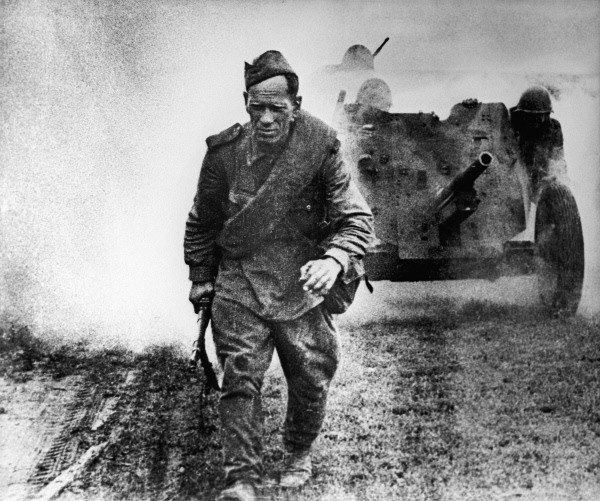
Soviet soldiers pushing a 45 mm (1.8 in) anti-tank gun on the road, 1 August 1943 (Licensed under CC BY-SA 3.0)
Looking at the figures in the cold light of day, the fascist forces should have been at a disadvantage in the war from early on. Considering they were outnumbered in each department, the Germans should not have been able to conquer the amount of territory which they did, capture Kiev, Kharkov, encircle Leningrad and threaten Moscow, all of which unfolded in 1941. Further major gains were made by the Germans in the summer and autumn of 1942.
Regardless of the Soviet military losses of 1941, on 1 January 1942 the Red Army still had 7,700 tanks to call upon and 12,000 warplanes (32) – in both cases, appreciably more than the German-Axis forces had at their disposal.
These latter figures reveal the Soviet Union’s continued production strength. Shortly after the German invasion started, the Kremlin successfully relocated most of its industry further east of Moscow, to regions such as Central Asia, western Siberia and Kazakhstan. They shifted over 1,500 industrial enterprises, between July and November 1941 alone, to the Soviet interior (33). Stalin merits praise for this policy, and for having implemented the massive growth in Soviet industrial output building up to the early 1940s.
Regarding the Russian winter of 1941-42, according to climatologists Hermann Flohn and Jehuda Neumann it “turned out to be one of the worst winters on record” (34). Flohn and Neumann outlined that the extreme weather “gravely hit the German armies that were not appropriately clothed, and which were not equipped with armaments, tanks and motorized vehicles that could properly function even in a ‘normal’ winter in the northern parts of the USSR, let alone a winter as rigorous as that of 1941-42”. (35)
The average temperature in Moscow for December 1941, taking into account both day and night time recordings, was minus 12.8 degrees Celsius. In January 1942, the average temperature in Moscow dropped to minus 20.2 degrees Celsius (36). The cold intensified further when darkness fell. On the night of 5 December 1941, just hours after the Red Army’s counteroffensive had begun, the thermometer in Moscow showed a recording of minus 36 degrees Celsius (37), the sort of conditions one would expect to find in the Arctic Circle.
Night time temperatures in western Russia dropped lower still in January 1942, the coldest month of all, perhaps to as low as minus 50 degrees Celsius. Taking into account these factors, it is remarkable the Germans not only survived the winter of 1941-42, and prevented large Soviet advances, but that they continued also to inflict greater losses on the enemy. Napoleon Bonaparte, considered as one of the greatest military commanders, had failed to lead his army through the Russian winter of 1812-13 following his invasion of June 1812. In spite of the Soviet counteroffensive and Arctic weather, the Germans experienced modest irrecoverable losses in the winter of 1941-42.
As 1942 dawned, the reality is that the German Army continued to be very powerful, still the world’s most formidable military machine. From January to March 1942 the Wehrmacht suffered 136,000 irrecoverable losses (38) [broken up as: 48,000 in January, 44,000 in February and 44,000 in March]. The Red Army suffered 620,000 irretrievable losses from January to March 1942, more than 4 times as much as the Germans in the same period. (39)
During the next 3 months from April to June 1942, the Soviet military forces suffered 780,000 irrecoverable losses (40). From April to June 1942, the Germans had just 52,000 irrecoverable losses (41) [broken up as: 23,000 in April, 16,000 in May and 13,000 in June]. Exact monthly figures are not at hand for irrecoverable Soviet losses.
Altogether for the first 6 months of 1942, the Red Army suffered 1.4 million irretrievable losses. Mawdsley wrote that during the first half of 1942, “Total German losses came to 188,000, on the face of it one-seventh of Soviet ones”. (42)
*
Note to readers: Please click the share buttons above or below. Follow us on Instagram, Twitter and Facebook. Feel free to repost and share widely Global Research articles.
Shane Quinn obtained an honors journalism degree and he writes primarily on foreign affairs and historical subjects. He is a frequent contributor to Global Research.
Notes
1 David T. Zabecki, Germany at War: 400 years of military history (ABC-CLIO, 28 Oct. 2014) p. 471
2 Donald J. Goodspeed, The German Wars (Random House Value Publishing, 2nd edition, 3 April 1985) p. 36
3 Evan Mawdsley, Thunder in the East: The Nazi-Soviet War, 1941-1945 (Hodder Arnold, 23 Feb. 2007) p. 143
4 Ibid.
5 Ibid., p. 144
6 Ibid., p. 146
7 Ibid., pp. 145-46
8 Ibid., pp. 20-21
9 Ibid., p. 19
10 John Simkin, “Kliment Voroshilov”, Spartacus Educational, September 1997 (Updated January 2020)
11 Chris Bellamy, Absolute War: Soviet Russia in the Second World War (Pan; Main Market edition, 21 Aug. 2009) p. 206
12 John Sweeney, Regional Patterns of Urban Growth in the USSR, Geographical Association, April 1984, Jstor, p. 3 of 8
13 Bellamy, Absolute War, p. 206
14 Ibid., pp. 206 & 245
15 Ibid., p. 245
16 Ibid., p. 23
17 Mawdsley, Thunder in the East, p. 86
18 Bellamy, Absolute War, p. 245
19 Mawdsley, Thunder in the East, p. 85
20 Ibid., pp. 86 & 117
21 Bellamy, Absolute War, p. 206
22 Ibid., p. 23
23 Jacques R. Pauwels, The Myth of the Good War: America in the Second World War (Formac/Lorimer; 2nd Edition, 1 Sept. 2015) p. 73
24 John Toland, Adolf Hitler: The Definitive Biography (Bantam Doubleday Dell Publishing Group; Illustrated edition, 1 Dec. 1991) p. 708
25 Mawdsley, Thunder in the East, p. 59
26 Ibid., p. 46
27 Ibid., p. 19
28 Ibid., p. 30
29 Ibid., p. 19
30 Ibid.
31 Ibid., p. 42
32 Ibid., p. 47
33 Sweeney, Regional Patterns of Urban Growth in the USSR, Jstor, p. 3 of 8
34 J. Neumann and H. Flohn, Great Historical Events That Were Significantly Affected by the Weather: Part 8, Germany’s War on the Soviet Union, 1941–45. Long-range Weather Forecasts for 1941–42 and Climatological Studies, American Meteorological Society, June 1987, Jstor, p. 1 of 11
35 Ibid., p. 3 of 11
36 Ibid., p. 4 of 11
37 Goodspeed, The Germans Wars, p. 401
38 Mawdsley, Thunder in the East, p. 147
39 Ibid.
40 Ibid.
41 Ibid.
42 Ibid.
Featured image: German infantry in Russia, June 1943 (Licensed under CC BY-SA 3.0 de)
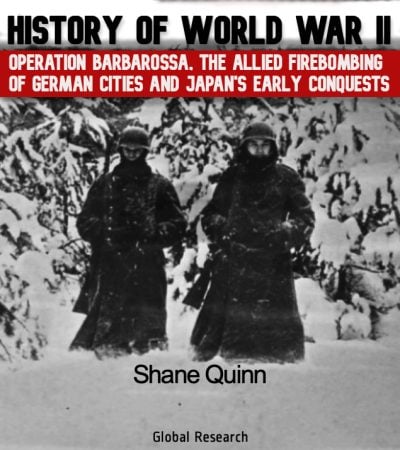 History of World War II: Operation Barbarossa, the Allied Firebombing of German Cities and Japan’s Early Conquests
History of World War II: Operation Barbarossa, the Allied Firebombing of German Cities and Japan’s Early Conquests
By Shane Quinn
The first two chapters focus on German preparations as they geared up to launch their 1941 invasion of the Soviet Union, called Operation Barbarossa, which began eight decades ago. It was named after King Frederick Barbarossa, a Prussian emperor who in the 12th century had waged war against the Slavic peoples. Analysed also in the opening two chapters are the Soviet Union’s preparations for a conflict with Nazi Germany.
The remaining chapters focus for the large part on the fighting itself, as the Nazis and their Axis allies, the Romanians and Finns at first, swarmed across Soviet frontiers in the early hours of 22 June 1941. The German-led invasion of the USSR was the largest military offensive in history, consisting of almost four million invading troops. Its outcome would decide whether the post-World War II landscape comprised of an American-German dominated globe, or an American-Soviet dominated globe. The Nazi-Soviet war was, as a consequence, a crucial event in modern history and its result was felt for decades afterward and, indeed, to the present day.
Click here to read the e-Book.
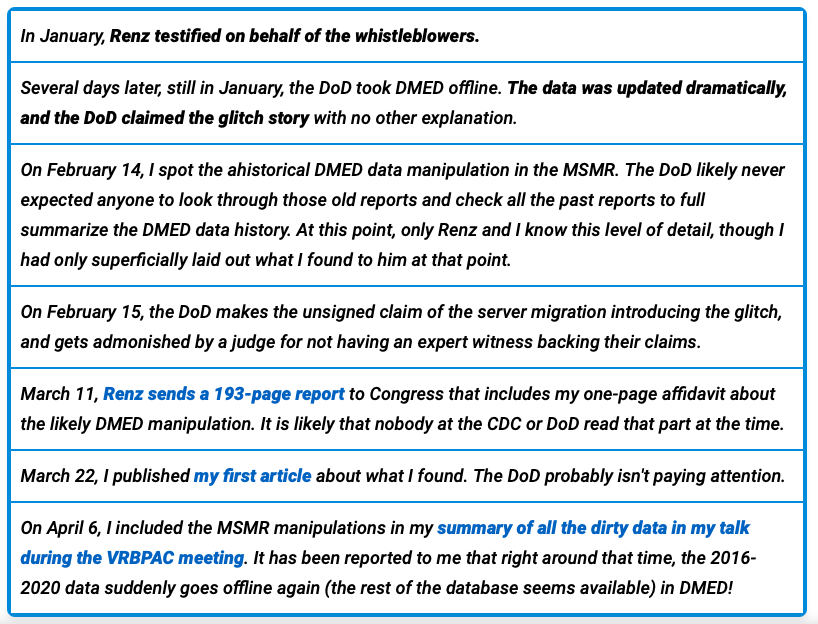
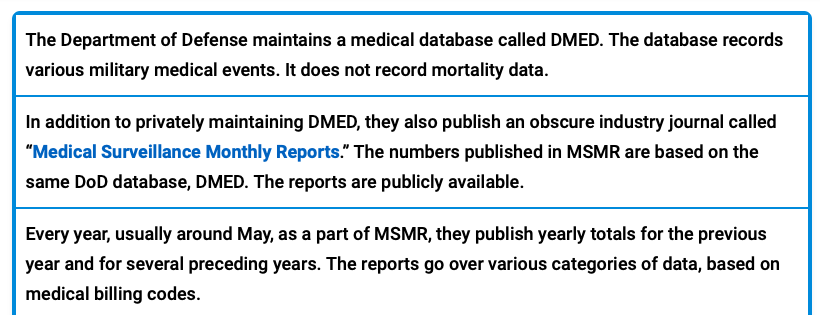


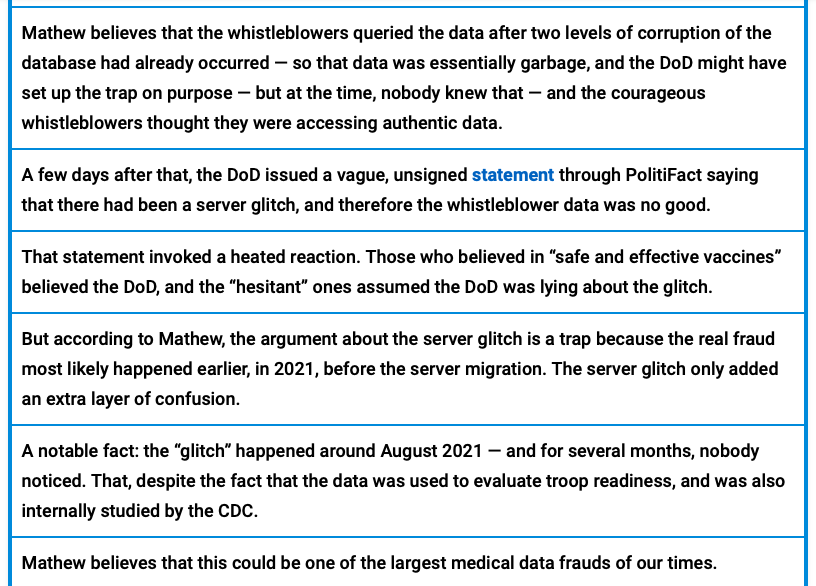
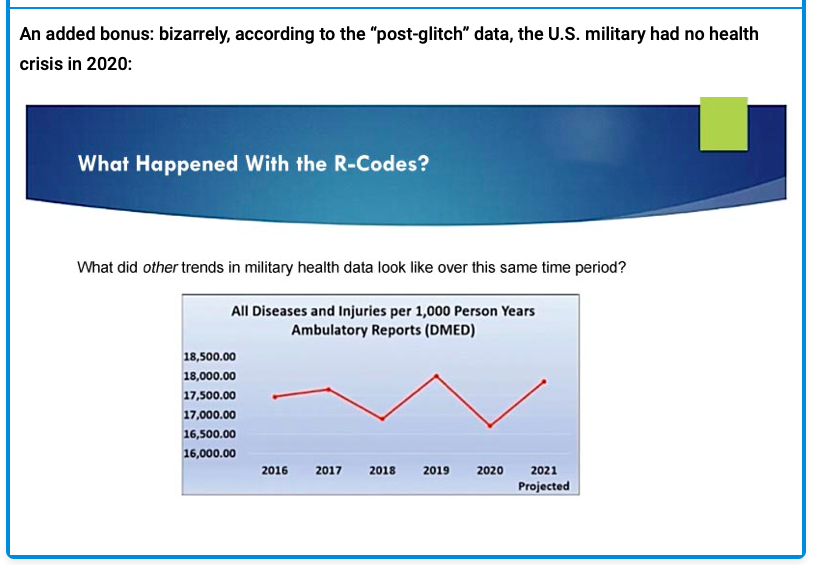
 Dear Friends, Sorry to Announce a Genocide: Dr. Naomi Wolf on the Pfizer “Confidential Report”
Dear Friends, Sorry to Announce a Genocide: Dr. Naomi Wolf on the Pfizer “Confidential Report” Will the Tragic Fate of World Stars like Celine Dion and Justin Bieber Open the Eyes of their Fans? Impacts of Covid-19 Vaccine
Will the Tragic Fate of World Stars like Celine Dion and Justin Bieber Open the Eyes of their Fans? Impacts of Covid-19 Vaccine 38,983 Deaths and 3,530,362 Injuries Following COVID Shots in European Database as Mass Funeral for Children Who Died After Pfizer Vaccine Held in Switzerland
38,983 Deaths and 3,530,362 Injuries Following COVID Shots in European Database as Mass Funeral for Children Who Died After Pfizer Vaccine Held in Switzerland Video: The Plan. WHO Plans to Have 10 Years of Pandemics (2020-2030). “Proof that the Pandemic was Planned with a Purpose”
Video: The Plan. WHO Plans to Have 10 Years of Pandemics (2020-2030). “Proof that the Pandemic was Planned with a Purpose” Black Sea Geopolitics and Russia’s Control of Strategic Waterways: The Kerch Strait and the Sea of Azov
Black Sea Geopolitics and Russia’s Control of Strategic Waterways: The Kerch Strait and the Sea of Azov Bayer Head Admits COVID-19 Vaccine Is Gene Therapy
Bayer Head Admits COVID-19 Vaccine Is Gene Therapy Global Planned Financial Tsunami Has Just Begun
Global Planned Financial Tsunami Has Just Begun Cases of Brain Damage in Children Skyrocket Following COVID-19 Vaccines
Cases of Brain Damage in Children Skyrocket Following COVID-19 Vaccines Video: Pfizer’s “Secret” Report on the Covid Vaccine. Beyond Manslaughter. The Evidence is Overwhelming. The Vaccine Should Be Immediately Withdrawn Worldwide
Video: Pfizer’s “Secret” Report on the Covid Vaccine. Beyond Manslaughter. The Evidence is Overwhelming. The Vaccine Should Be Immediately Withdrawn Worldwide We’re Now in the Last Stage of a Tyrannical Takeover
We’re Now in the Last Stage of a Tyrannical Takeover The Devastating Impacts of the COVID-19 Vaccine Confirmed: We Were Lied to: Game Over, We Won. Steve Kirsch
The Devastating Impacts of the COVID-19 Vaccine Confirmed: We Were Lied to: Game Over, We Won. Steve Kirsch Video: Graphene Hydroxide in the mRNA Vaccine Vial: Assassination of Dr. Andreas Noack
Video: Graphene Hydroxide in the mRNA Vaccine Vial: Assassination of Dr. Andreas Noack The COVID Pandemic and the mRNA Vaccine: What Is the Truth? Dr. Russell L. Blaylock
The COVID Pandemic and the mRNA Vaccine: What Is the Truth? Dr. Russell L. Blaylock Switzerland’s Secretive Banking System and the WEF’s “Great Reset”: First in “You’ll Own Nothing and You’ll be Happy”?
Switzerland’s Secretive Banking System and the WEF’s “Great Reset”: First in “You’ll Own Nothing and You’ll be Happy”? Video: Reiner Füellmich and 50 Lawyers: “Different Batches” and “Lethal Doses”, ”The Vaccines Are Designed to Kill”
Video: Reiner Füellmich and 50 Lawyers: “Different Batches” and “Lethal Doses”, ”The Vaccines Are Designed to Kill” The Top Ten Creepiest and Most Dystopian Things Pushed by the World Economic Forum (WEF)
The Top Ten Creepiest and Most Dystopian Things Pushed by the World Economic Forum (WEF) The War in Ukraine Marks the End of the American Century. “What’s Left is a Steaming Pile of Dollar Denominated Debt”
The War in Ukraine Marks the End of the American Century. “What’s Left is a Steaming Pile of Dollar Denominated Debt” Bombshell Document Dump on Pfizer Vaccine Data
Bombshell Document Dump on Pfizer Vaccine Data US Department of Defense Finally Comes Clean – Admits in Public Document that There Are 46 US Military-Funded Biolabs in Ukraine
US Department of Defense Finally Comes Clean – Admits in Public Document that There Are 46 US Military-Funded Biolabs in Ukraine Biggest Lie in World History: There Never Was A Pandemic. The Data Base is Flawed. The Covid Mandates including the Vaccine are Invalid
Biggest Lie in World History: There Never Was A Pandemic. The Data Base is Flawed. The Covid Mandates including the Vaccine are Invalid